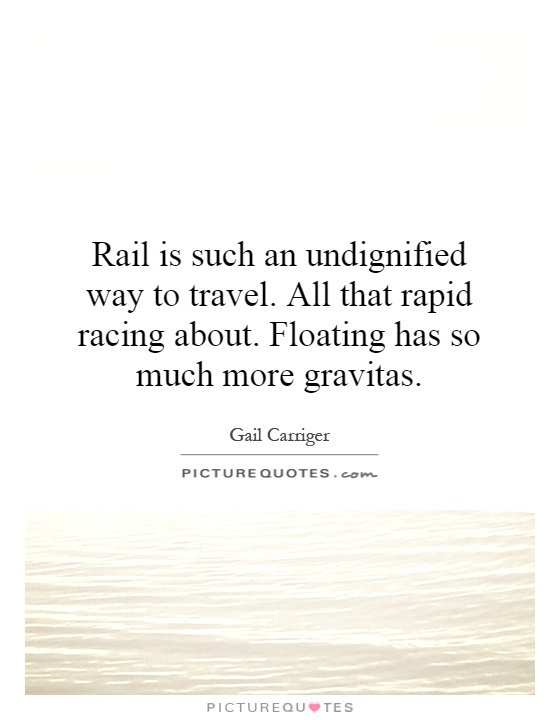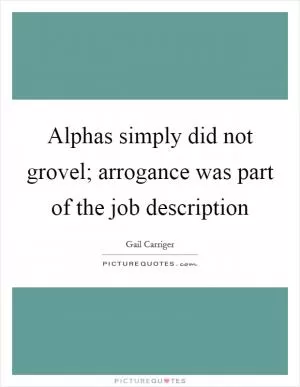Rail is such an undignified way to travel. All that rapid racing about. Floating has so much more gravitas

Rail is such an undignified way to travel. All that rapid racing about. Floating has so much more gravitas
In the world of Gail Carriger's novels, where steampunk meets supernatural creatures and Victorian manners clash with modern sensibilities, the idea of rail travel being undignified is not a surprising sentiment. In a society where appearances and etiquette are of utmost importance, the idea of hurtling through the countryside in a noisy, crowded train can seem rather uncouth compared to the elegance and grace of floating.In Carriger's world, floating is a mode of transportation reserved for the upper echelons of society, those with the means and connections to access such luxurious and prestigious means of travel. It is a symbol of status and sophistication, a way to show off one's wealth and privilege. To float is to glide effortlessly through the air, above the hustle and bustle of the common folk below, a literal and metaphorical elevation above the masses.
On the other hand, rail travel is seen as more utilitarian, more practical, but lacking in the refinement and elegance that floating provides. Trains are noisy, dirty, and often overcrowded, with passengers jostling for space and privacy. The rapid pace of travel can be disorienting and unsettling, especially for those accustomed to the leisurely pace of floating.
However, there is a certain thrill to rail travel that cannot be denied. The speed and efficiency of trains can be exhilarating, the sense of movement and progress palpable as the landscape rushes by outside the window. There is a sense of adventure and excitement in the unpredictability of train travel, the chance encounters with strangers, the shared experiences with fellow passengers.












 Friendship Quotes
Friendship Quotes Love Quotes
Love Quotes Life Quotes
Life Quotes Funny Quotes
Funny Quotes Motivational Quotes
Motivational Quotes Inspirational Quotes
Inspirational Quotes